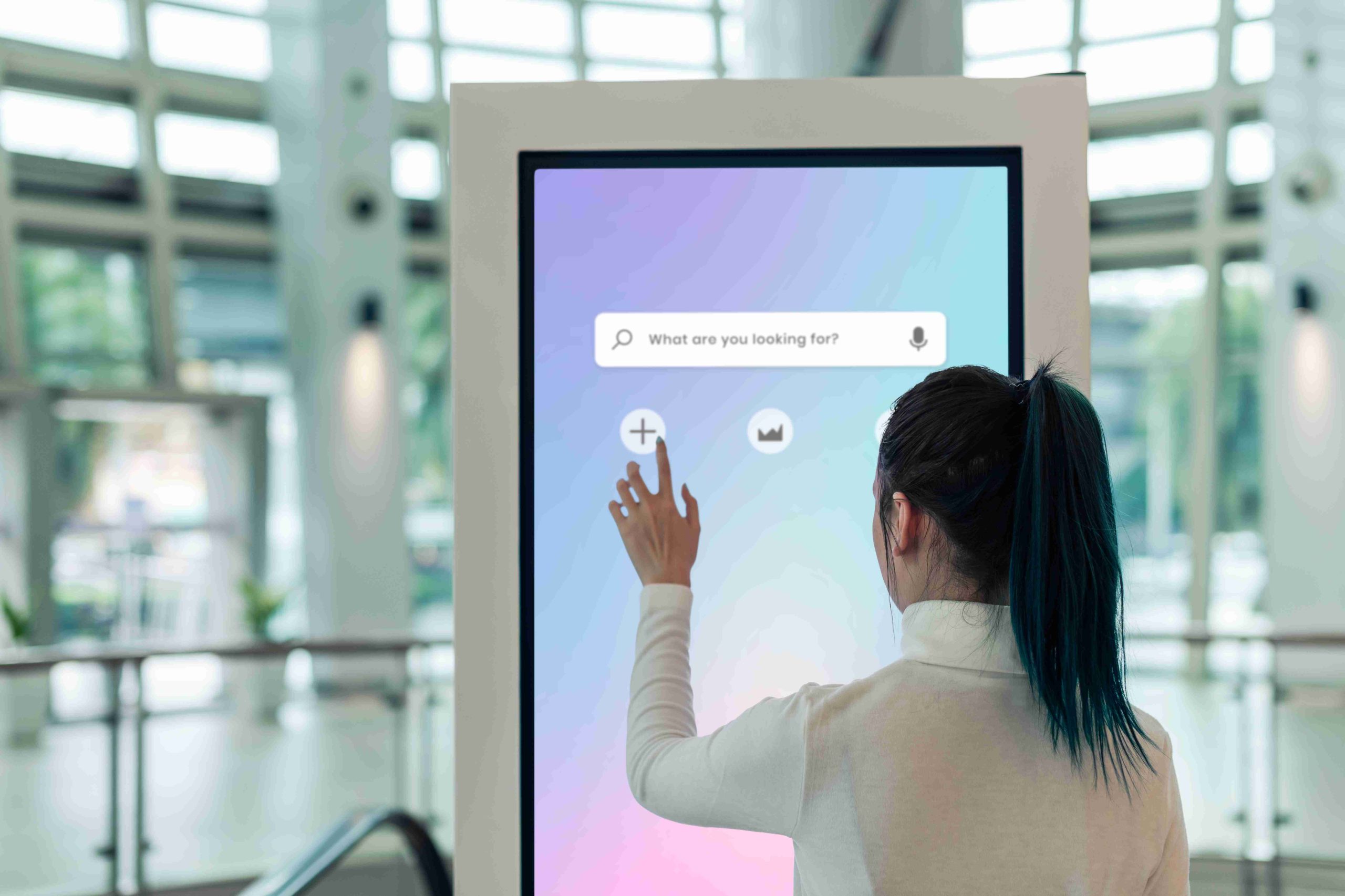In today’s fast-paced digital world, traditional static signs give way to dynamic, interactive displays known as digital signage. Digital signage is using digital screens or displays to convey information, advertisements, or messages to a targeted audience. These displays can range from small screens in retail stores to large video walls in corporate offices or public spaces.
Growing Importance in Business Communication:
Digital signage is gaining popularity due to its unparalleled ability to capture attention and engage audiences effectively. In an era where visual communication reigns supreme, businesses increasingly recognize the value of digital signage as a powerful tool for conveying messages, enhancing brand awareness, and influencing consumer behavior.
In various sectors such as retail, hospitality, healthcare, education, transportation, and corporate environments, digital signage plays a pivotal role in communicating vital information, promoting products and services, guiding visitors, and entertaining audiences. Its flexibility and adaptability make it an indispensable asset for modern businesses striving to stay ahead in a competitive marketplace.
Benefits of Using Digital Signage Software:
- Dynamic Content Management: Digital signage software enables businesses to create, schedule, and manage dynamic content effortlessly. Whether updating promotional offers in real-time or displaying event schedules, software solutions provide the flexibility to adapt content according to changing needs and audience preferences.
- Enhanced Engagement: Interactive features of digital signage software captivate viewers and encourage active participation. Touchscreen capabilities, QR code integration, and social media feeds enable businesses to create immersive experiences that resonate with their target audience, fostering deeper engagement and brand loyalty.
- Centralized Control: With digital signage software, businesses can centrally manage multiple displays from a single interface across different locations. This centralized control allows seamless content distribution, scheduling, and monitoring, streamlining operations and ensuring consistency in messaging across the organization.
- Data-driven Insights: Advanced analytics and reporting tools provided by digital signage software offer valuable insights into audience behavior, content performance, and campaign effectiveness. Businesses can optimize their digital signage strategies for maximum impact and ROI by tracking their dwell time, viewer demographics, and conversion rates.
- Cost-effectiveness: Unlike traditional print media, digital signage offers a more cost-effective solution for delivering dynamic content to a targeted audience. While print materials incur recurring printing and distribution costs, digital signage software enables businesses to create and update content digitally, minimizing expenses associated with production and logistics.
- Scalability and Flexibility Digital signage software solutions are highly scalable, allowing businesses to expand their signage networks effortlessly as their needs evolve. Whether adding new displays or integrating additional features, software platforms offer the flexibility to adapt to changing requirements without significant investment or disruption.
Key Considerations When Choosing Digital Signage System
Define Your Goals:
- Objectives: Determine the primary goals of your digital signage deployment, whether it’s enhancing brand awareness, promoting products/services, or sharing information with your audience.
- Target Audience: Identify your target audience’s demographics, preferences, and behaviors to tailor your content effectively.
Content Creation and Management:
- Ease of Use: Evaluate the software’s content creation tools, including templates, drag-and-drop functionality, and customization options, to ensure simplicity and flexibility.
- Scheduling and Playlist Features: Look for robust scheduling capabilities to schedule content playback at specific times and dates. Playlist features enable you to organize and sequence your content effectively.
- Content Types Supported: Ensure the software supports various content types, including images, videos, social media feeds, and live data integration, to create engaging and dynamic displays.
Deployment and Management:
Cloud-Based vs. On-Premises Solutions:
- Cloud-Based: Offers flexibility, scalability, and accessibility from anywhere with an internet connection. However, ongoing subscription costs may be incurred.
- On-Premises: Provides greater control and security over your data but may require significant upfront investment in hardware and infrastructure.
- Remote Content Management: Check for remote management capabilities that allow you to update and monitor displays from a centralized location, saving time and resources.
- Scalability: Ensure the software can scale to accommodate future growth, including adding more displays or expanding to new locations, without compromising performance.
Technical Features:
- User Interface: Prioritize user-friendly interfaces with intuitive navigation to streamline content management tasks and minimize training requirements.
- Security Features: Look for security measures such as password protection, data encryption, and user permissions to safeguard your content and sensitive information.
- Hardware Compatibility: Ensure compatibility with your existing hardware infrastructure, including displays, media players, and other peripherals, to avoid compatibility issues and optimize performance.
Additional Considerations:
- Budget and Pricing Models: Evaluate pricing models, including subscriptions, one-time fees, and additional costs for premium features, to align with your budget and long-term financial plans.
- Customer Support: Assess the availability and quality of customer support options, including technical assistance, training resources, and service level agreements (SLAs), to ensure timely resolution of issues.
- Free Trials or Demos: Before committing, take advantage of free trials or demos offered by software vendors to test the platform’s features, functionality, and suitability for your specific requirements.
Conclusion
Choosing the right digital signage software is crucial for maximizing the effectiveness and impact of your digital signage deployment. By selecting a software solution that aligns with your goals, target audience, and technical requirements, you can unlock the full potential of digital signage to enhance communication, engage audiences, and achieve your business objectives.
Whether you prioritize ease of use, scalability, or advanced features, investing time and resources in evaluating and selecting the right software platform can yield significant returns on investment and ensure long-term success.
